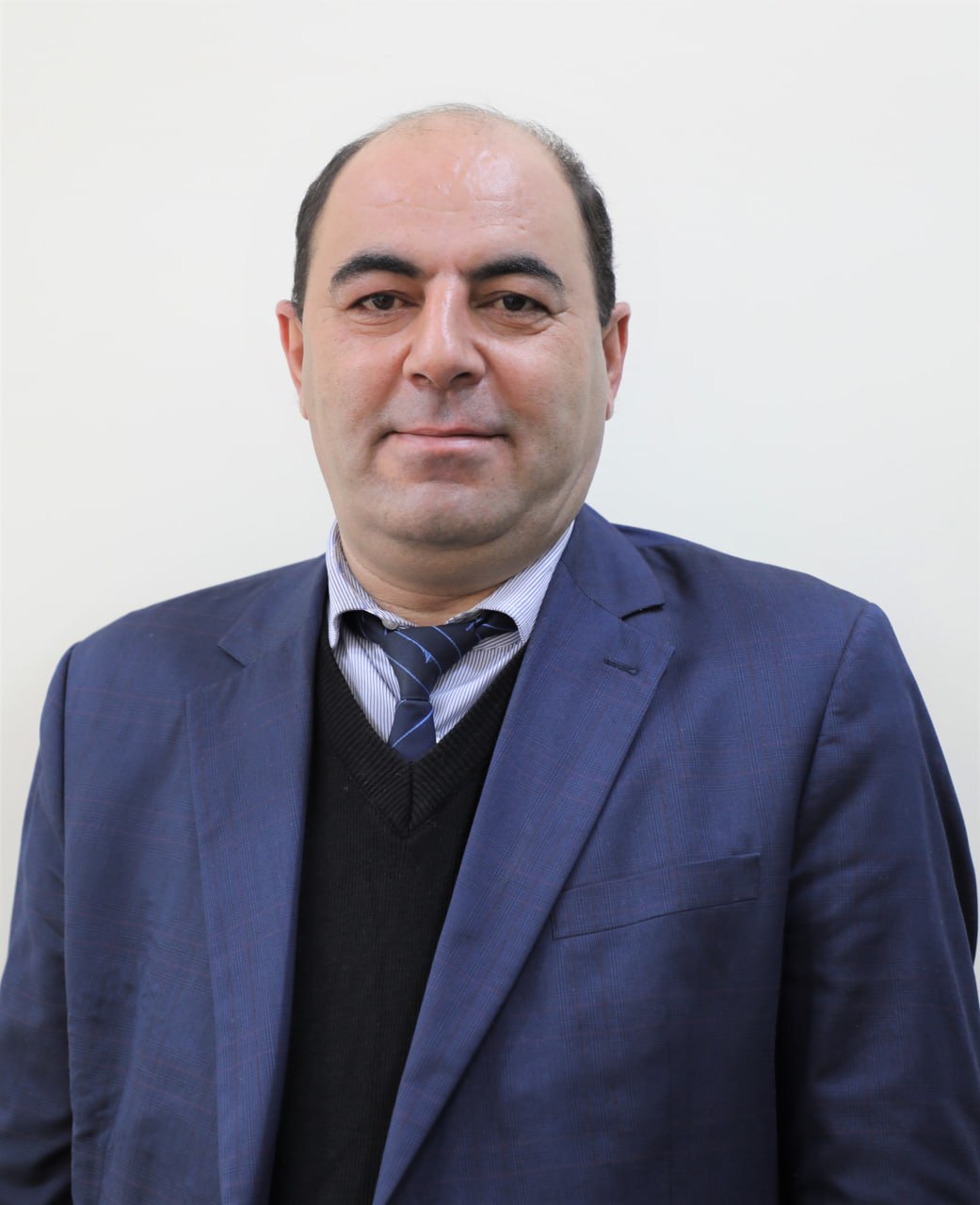Engineering Physics Institute
Director

Absanov Akhmad Abdusattarovich
- Reception days: Every day (14:00-16:00)
- Phone: +99866-239-19-40; +99897 396 36 61
- Email: absanovakhmad@gmail.com
Biography
- 1993-1998 - Student of Samarkand State University;
- 1998-1999 - Air conditioning systems engineer;
- 1999-2001 - Senior laboratory assistant at the Department of Optics and Spectroscopy of Samarkand State University;
- 2001-2004 - Postgraduate student of the Department of Optics and Spectroscopy of Samarkand State University;
- 2002-2010 - Senior laboratory assistant at the Department of Optics and Spectroscopy of Samarkand State University;
- 2009-2012 - Doctoral student at Samarkand State University;
- 2013-2015 - Methodologist of the master's department of Samarkand State University;
- 2015-2017 - Deputy Dean of the Faculty of Physics of Samarkand State University;
- 2018-2021 - Dean of the Faculty of Physics of Samarkand State University;
- 2021-2023 - Associate Professor of the Department of Optics and Spectroscopy of Samarkand State University;
- From October 2023 to the present - Director of the Institute of Engineering Physics of Samarkand State University.
ABOUT THE INSTITUTE
Since the founding of Uzbek State University (now Samarkand State University) in 1927, the Faculty of Physics and Mathematics began to function. For the first time, in 1933, scientist Prof. A.M. Titov from Russia was invited to work in the physics department in Samarkand, and together with A. Yu. Pedder and N.P. Kuznetsov, the chair "General Physics" was created in 1933, and the chair "Optics and theoretical physics" was created in 1935.
In 1933, under Professor AMTitov’s guidance, scientific research was conducted on solar energy (Geliophysics). For the first time, in 1935, K.T. Abdirashidov, A. Kochnev, A. Tekuchyov, U. Sultonov and Musa Muminov defended their candidate dissertations under his leadership.
Prof. Muso Muminov's services should be emphasized in the development of physics. In 1944, he was appointed as a Rector of Uzbek State University and, at the same time, he was also head of the chair "Theoretical Physics" and then created the "General Physics" and "Optics" chairs. In 1951 M. Muminov together with H. Haydarov created the first laboratory textbook in the Uzbek language on "Molecular Physics".
In August, 1961, the Faculty of Physics was separated from the Faculty of Physics and Mathematics and a new period began in the development of physics. In 1959, A.K. Otakhodjaev was appointed as the head of the “Optics” chair (later the Academy of Sciences of Uzbekistan), which led to the formation of the School of Optics in Samarkand State University.
Six scientific schools were created. 1. “Optics” (Founder: Academician A.K. Otaxujayev), 2. Nuclear Physics (Founder: Prof. Muso Muminov), 3. “Magnetism” (Founder: Professor O. Kuvondikov), 4. Space Physics and Astrophysics (Founder: Professor B. Mahmudov), 5. Nonlinear Optics (Founder: Professor L.M. Sobirov), 5. Molecular Luminescence (Founder: Professor N. Nizomov).
According to the Decree of the President of the Republic of Uzbekistan PD-82 “On additional measures to further improve the activities of the Samarkand State University” dated January 13, 2022, the Engineering Physics Institute was opened at Samarkand State University on the basis of the Faculty of Physics. The institute has 6 departments: Solid State Physics (Head of the department, Assoc. Prof. Akhrorov S.), Nuclear Physics and Astronomy (Head of the department, Assoc. Prof. Eshbureiv R.), General Physics (Head of the department Assoc. Prof. Rajabov R.), Optics and Spectroscopy (Head of the department, Ph.D. Sharifov G.), Theoretical and Applied Mechanics (Head of the department, Prof. Khudoynazarov Kh.), Quantum Electronics and Theoretical Physics (Head of the department, Prof. Eshkobilov N.).
In addition to training in the physical sciences, starting in the 2022-2023 academic year, the institute has started training in the following new areas: 1. Electronics and Instrumentation. 2. Intelligent Engineering Systems. 3. Manufacturing technology for electronic equipment. 4. Engineering technology. 5. Medical physics. 6. Mechanics and mathematical modeling.
Currently, more than 1,000 students are studying at the institute in 10 undergraduate specialties and more than 50 masters in 7 areas of the master’s program. The teaching staff includes more than 70 employees, of which 1 is an academician of the Academy of Sciences of the Republic of Uzbekistan, and 17 are doctors of sciences, professors, 35 PhD, associate professors, 16 senior teachers, assistants. 10 professors from foreign universities are involved in the educational and scientific process at the institute.

